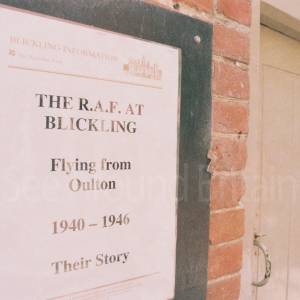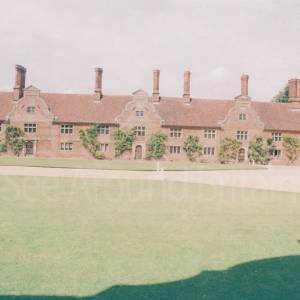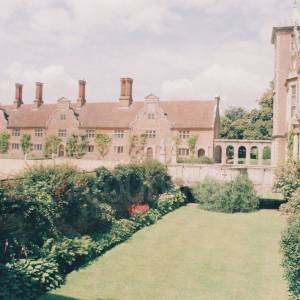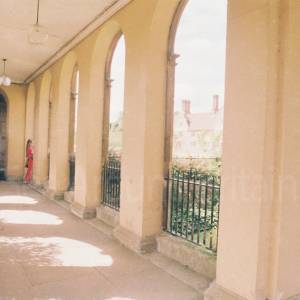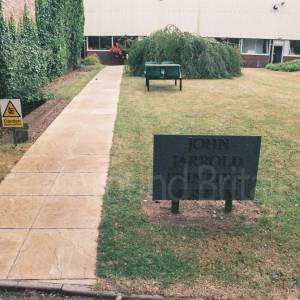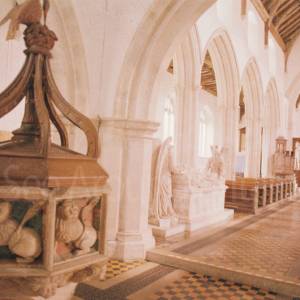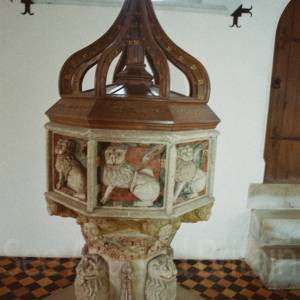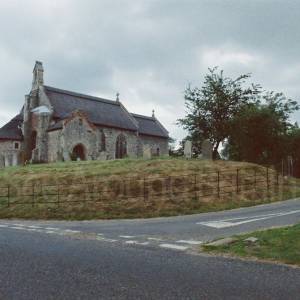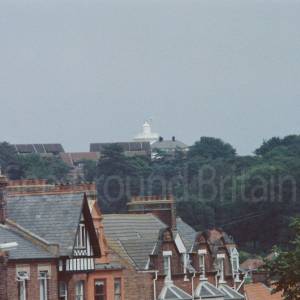Blickling Hall, Gardens and Country Park, Norfolk
Details
Accessibility
https://www.nationaltrust.org.uk/visit/norfolk/blickling-estate/accessibility-at-blickling-estate
2025: "Blue Badge parking in the main car park, around 385 metres from the House and Garden entrance. Some accessible parking and drop-off available in the Farmyard – accessed via the main road, turning at the Church. Accessible toilets. Changing Places. Wheelchairs and mobility scooters available. Multi-use trail through the parkland.
Accessible route and/or map: Our multi-use trail provides access for all, with cyclists, walkers, runners, pushchair and adapted wheelchair users, and for powered mobility vehicles to enjoy, all year round.
Accessible toilets in main car park, East Wing and in the Farmyard. A Changing Places toilet is located in the Farmyard.
A braille Welcome Leaflet is available from the Estate Barn Visitor Reception, and a braille guide is available in the House.
Changing Places: Located in the Farmyard. Access is by radar key (one is available from the Shop in the East Wing).
Designated parking:
Accessible car parking available around 385 metres from the Hall and Garden entrance. There are some accessible parking spaces in the Farmyard – accessed via the main road, turning at the Church.
A drop-off point is available at the Farmyard accessed via the main road, turning at the Church. There is seating available.
Fixed induction loops are available at all till points.
Large print guides are available at visitor welcome points and in the House.
Level access to food outlet:
There are ramps to both cafés onsite. For the Muddy Boots café, please head to the rear entrance for access, located next to the car park. You’ll find the main entrance to the Stables in the East Wing, with ramped access.
Level access to shop:
There are ramps throughout the East Wing to provide access through the Shop and to other facilities. Some ramps are steep.
Level access/terrain:
The multi-use trail provides some level access. From the main car park or Farmyard parking there are some slopes to access the main facilities, as well as gravel on the main drive to the House and in the Gardens.
Lift:
Limited lift access in the House for those able to evacuate via the stairs without assistance in the event of an emergency.
Narrow corridors:
Some of the walkway through the East Wing can feel narrow, and there are some narrow corridors in the House.
Powered mobility vehicle available:
Mobility scooters are available to hire from the Estate Barn visitor reception next to the car park (parkland scooter) and the East Wing visitor reception near the Farmyard (garden scooter). Booking is recommended at peak times. Please call 01263 733956 or email: blickling@nationaltrust.org.uk to book (please note, emails are only monitored Mon-Fri 9am-5pm).
Ramped access/slopes:
Ramped access into the East Wing, House, Gardens and West Wing exit from the House.
Seating available:
Some seating is available on all main pathways, key locations are highlighted on the visitor map. There are seats in most rooms of the House and a mix of soft seating with arms and backs are provided.
Steps/uneven terrain:
In the Garden there are steps up to the Temple. Access to the RAF museum is on the upper floor of the East Wing by stairs.
Wheelchairs available:
Manual wheelchairs are available from the East Wing Visitor Reception. Two Mountain Trike Push all terrain wheelchairs are available from the Estate Barn Visitor Reception. If you would like to book this equipment, please call 01263738030 or email: blickling@nationaltrust.org.uk prior to your visit.
Brief description
https://en.wikipedia.org/wiki/Blickling_Hall
2025: "Blickling Hall is a Jacobean stately home situated in 5,000 acres (2,000 ha) of parkland in a loop of the River Bure, near the village of Blickling north of Aylsham in Norfolk, England. The mansion was built on the ruins of a Tudor building for Sir Henry Hobart from 1616 and designed by Robert Lyminge. The library at Blickling Hall contains one of the most historically significant collections of manuscripts and books in England, containing an estimated 13,000 to 14,000 volumes. The core collection was formed by Sir Richard Ellys. The property passed into the care of the National Trust in 1940.
Between 1499 and 1505, the property was in the possession of the Boleyn family.
The library at Blickling Estate contains one of the most historically significant collections of manuscripts and books in Great Britain. The library's estimated 13,000 to 14,000 volumes span 146 linear feet. The core collection was formed by Sir Richard Ellys (1682–1742), a cousin of the Hobarts of Blickling.[11] The most important manuscript associated with the house is the Blickling homilies, which is one of the earliest extant examples of English vernacular homiletic writings.[12] The Blickling homilies were first edited and translated in the 19th century by Richard Morris, whose work is still considered definitive. A more recent translation and edition by Richard J. Kelly was widely panned by scholars and critics upon publication.[13][14][15] Another important manuscript formerly at Blickling Hall is the Blickling or Lothian Psalter, an 8th-century illuminated psalter with Old English glosses, now owned by the Pierpont Morgan Library, where it is MS M.776.[16] The entire collection at Blickling Hall is in the process of being cataloged and put online by John Gandy, who began the project in 2010 but does not expect to finish for several years.[17] Catalog records are available as the project progresses and accessible through the National Trust website or COPAC.
The estate covers 4,777 acres (1,933 ha) and includes: 500 acres (200 ha) of woodland, 450 acres (180 ha) of parkland and 3,500 acres (1,400 ha) of farmland. Much of it is classified as Grade 2 and 3 agricultural land which is actively managed by the National Trust to provide income to support the house, gardens, park and woods.[18] The estate is listed Grade II* on the Register of Historic Parks and Gardens.[4]
The garden at Blickling covers 55 acres (22 ha)[19] and contains formal and informal gardens, Grade II listed buildings and structures, woodland, specimen trees, Victorian garden ornaments, topiary, the kitchen garden (open to the public 2010), and 18th-century yew hedges. The lawns which frame the main approach to the hall are bounded by yew hedges which were first recorded by William Freeman of Hamels in 1745.[18] Surrounding the hall on three sides is the dry moat. The plantings in the moist, sheltered conditions of the moat were considerably revised by Lindsay who introduced hosta, species of hydrangea, buddleia and rosemary.
To the rear of the property is the noted Parterre garden which is located on the east lawn. Originally created as a Victorian sunken garden it was remodelled by Lindsay in the early 1930s. Set around an 18th-century-listed stone fountain, she divided the garden into four large, colourful herbaceous beds surrounded by L-shaped borders stocked with roses and catmint with an acorn shaped yew marking each corner. In the terraces above the parterre there are plantings of peony, seasonal beds and the double borders created in 2006, contain a wide variety of perennials, shrubs and grasses with colours ranging from hot to cool. Close by are the White and Black borders which were established in 2009, together with a collection of elaeagnus. The western side of the garden features the lawned Acre which is fringed by a spreading oriental plane tree. Outdoor sports such as croquet are played here in the summer months. Further highlights are a collection of magnolia underplanted with autumn cyclamen, the shell fountain and the kitchen garden. To the north of the parterre is the Wilderness garden which is bisected by radial grassed avenues flanked with turkey oak, lime and beech trees and naturalised bulbs.[citation needed]
The wilderness hides a Secret Garden with a summerhouse, scented plants and a central sundial. Nearby is the listed 18th-century orangery which houses a collection of citrus trees. Adjacent, to the building is a steep sided dell which is home to many woodland plants including a selection of hellebore and foxglove. In 2009, an area of woodland was cleared close to the orangery to create a new woodland garden. Stocked with a wide range of woodland plants including camellia and varieties of mahonia. Opened in 2010, it will be known as the Orangery Garden.The Grade II listed Temple is approached by the Temple walk which is lined with azalea planted by Lindsay in her original 1930s design. Scattered throughout the garden are many garden ornaments including thirty pieces supplied to Lady Lothian in 1877 by Austin & Seeley of Euston Road, London.[18] Future projects include the creation of a philadelphus and rose garden, both of which will be located in the Wilderness and open to the public in the near future.[20] In 2015, it was announced that Blickling's unused walled garden covering 1.5 acres (0.61 ha) is to be regenerated. The project will take five years to complete.[21]"
https://en.wikipedia.org/wiki/Blickling_Park_mausoleum "The Blickling Park mausoleum is a Grade II* listed building in Blickling Hall, Norfolk, England. It was commissioned in 1793 by Lady Caroline Suffield, the daughter of John Hobart, 2nd Earl of Buckinghamshire, as a tomb for her father and his two wives. The Italian architect Joseph Bonomi the Elder designed the structure, which Henry Wood built. It is in the form of a pyramid, modelled on that of Cestius in Rome as an early example of Egyptian Revival architecture. The structure is now owned by the National Trust."
Address
Blickling Estate, Aylsham, Norfolk, NR11 6NF
blickling@nationaltrust.org.uk
Phone
01263 733956 + 01263 738030
Website
https://www.nationaltrust.org.uk/blickling-estate
Directions
"The Estate is on Blickling Road (old B1354, reclassified to C593), signposted from the A140 Norwich/Cromer. What3Words: ///rooster.unstated.tangent
Opening Times
Always check with the venue directly for up-to-date information including opening times and admission charges as they may be subject to change
"Opening times for 14 October 2025
Opening time: House11:00 - 16:00Garden10:00 - 17:00ParkDawn - DuskStables Café10:00 - 17:00Muddy Boots Café10:00 - 17:00Shop10:00 - 17:00Second-hand Bookshop11:00 - 16:00Woodgate, Bucks Common & Fisherman's car parksDawn - DuskCycle Hire is open Wednesday to Sunday 10am-4pm, last hires at 3pm. House Highlight Tours take place Monday - Friday at 10.30am from 28 April to 31 October 2025. Places available on a first come, first served basis from the Estate Barn Visitor Welcome. House and gardens last entry is 30 minutes before closure. Last orders in cafés 30 minutes before closure. Stamp shop open on Tuesdays and Thursdays, 11am - 3pm. The RAF Oulton Museum is open Tuesday to Sunday, 11am - 3pm, subject to volunteer availability.
Entry admission prices are for the House and Garden. Adult (18+), Child (5-17), under 5s free, Family (2 Adults and up to 3 children). When you buy your admission ticket you're directly supporting our conservation work.
Free entry for National Trust members. Did you know when your membership card is scanned by one of our team members, we receive £3.94 that goes towards our vital conservation work?
We are operating a pay and display in all our car parks, a charge of £5 (coin only) will apply for non-members. Members, please scan your card to obtain a ticket. If you want to pay by card for your car parking, please pop into our Estate Barn visitors reception.
House and garden admission 2025
Ticket typeWith Gift Aid/Without Gift AidAdult (18+)£18.70£17.00Child (5-17) under 5s free£9.40£8.50Family (2 Adults and up to 3 children)£46.80£42.50(1 adult and up to 3 children)£28.10£25.50Group (Adult 18+)£16.15Group (Child 5-17)£8.08"Transport
2025: "By bus
Amenities
Bookshop
The largest second-hand bookshop the National Trust has to offer, open seven days a week. Currently accepting donations, however please call in advance on 01263 738075 if you're planning to donate a large amount of books.
Café
The Stables and Muddy Boots cafés are open with indoor and outdoor seating.
Car park
We have four car parks across the Blickling Estate operating on a pay and display basis with a charge of £5 (coin only) for non-members. To pay by card, please pop into our Estate Barn visitors reception. Members please scan your card to obtain a free ticket.
Cycle parking
Cycle parking is located in the main car park and inside the farmyard.
Dogs allowed
Dogs under close control are welcome on most of the parkland walks. Please keep them on a lead in car parks and on the lake walk as these are the busiest areas. Dogs on short leads are welcome in the farmyard, the bookshop, on the front drive, in the estate barn and Muddy Boots café. Only Assistance dogs are allowed in the house, garden and east wing.
Family friendly
Baby changing can be found at Estate Barn in the main car park, near East Wing visitor reception and in the Farmyard area. Bottles and baby food can be warmed up in our cafés. We welcome breastfeeding everywhere at Blickling. High chairs are available in the Stables café.
Picnic area
Picnic benches can be found in the Garden under and around the stretch tent, in the Farmyard and near the Estate Barn visitor welcome near the main car park. You're welcome to bring a picnic blanket and find a spot to eat surrounded by nature.
Plant shop
A selection of seasonal plants can be seen on the main drive and are available to purchase from the shop.
Pub
The Bucks Arms is a seventeenth century traditional pub and former coaching inn on the walk down from the main car park to the house (not National Trust).
Shop
Shop with seasonal peat-free potted plants, gifts, homeware, books and gardening accessories.
Toilet
Toilets, including accessible toilets in main car park, East Wing and in the Farmyard. A Changing Places toilet is located in the Farmyard.
Travel Information
For further travel information please see: www.traveline.info
Or call Traveline on 0871 200 22 33
(Calls cost 12p per minute plus your phone company's access charge)


